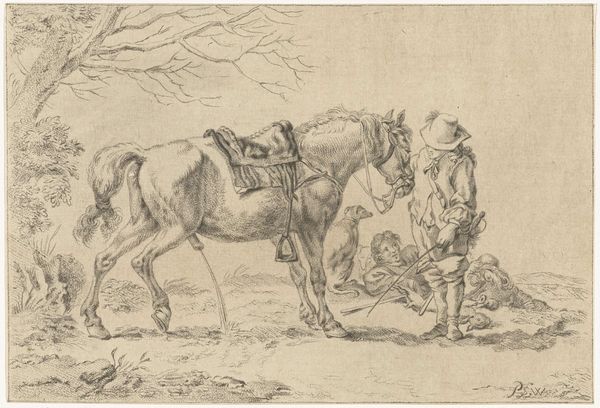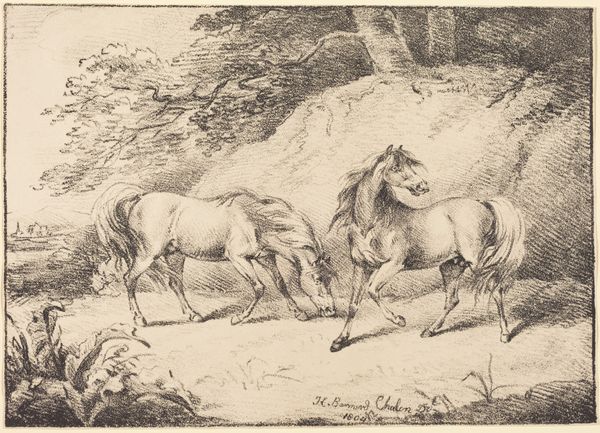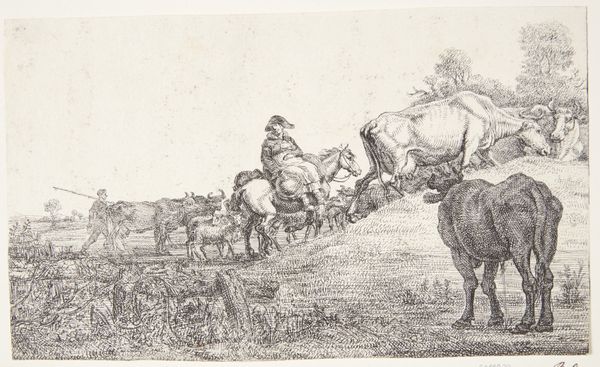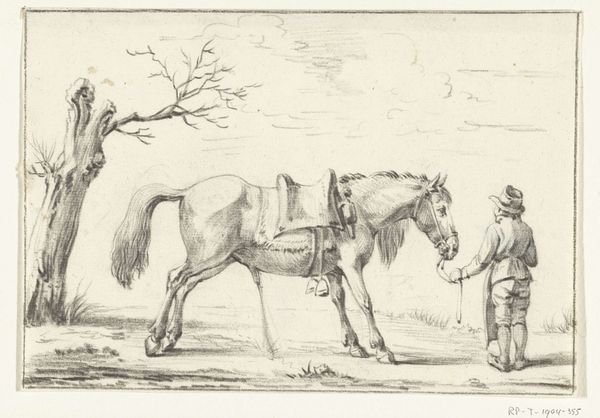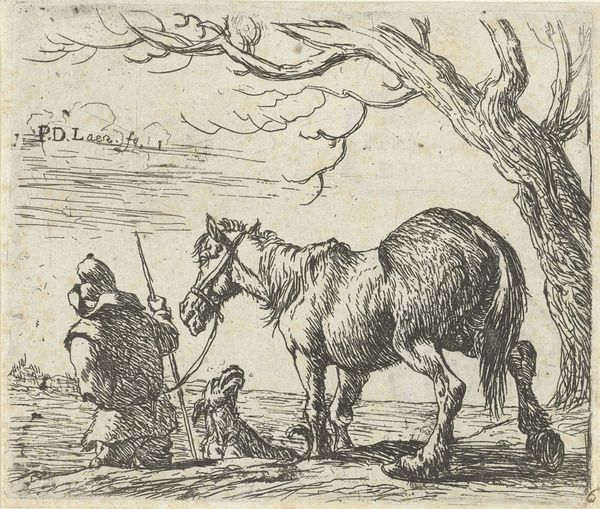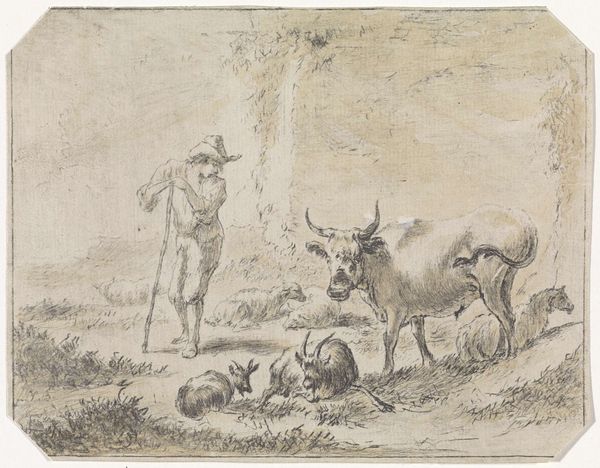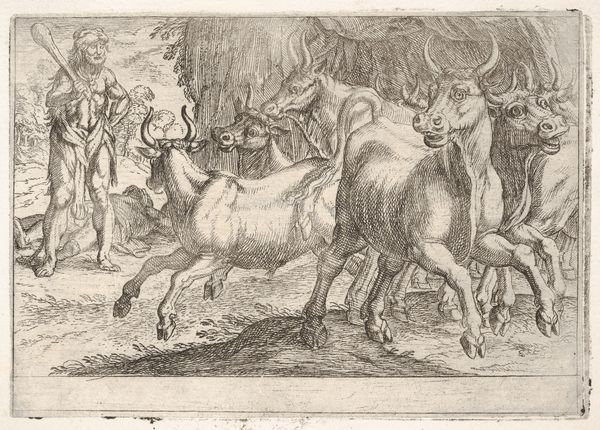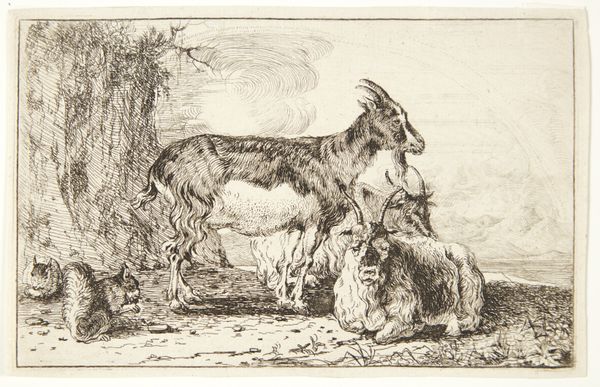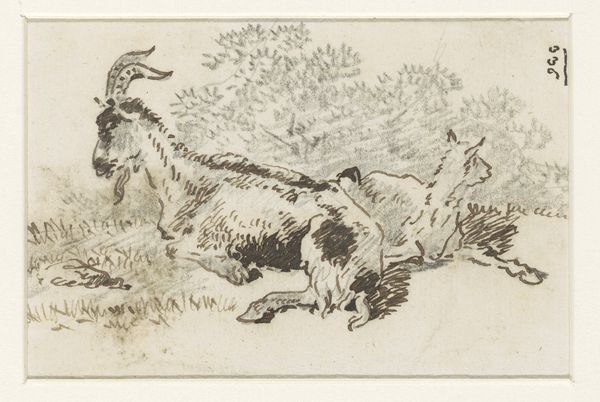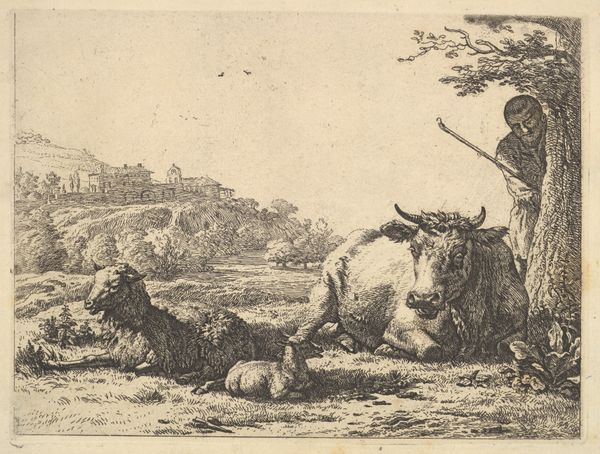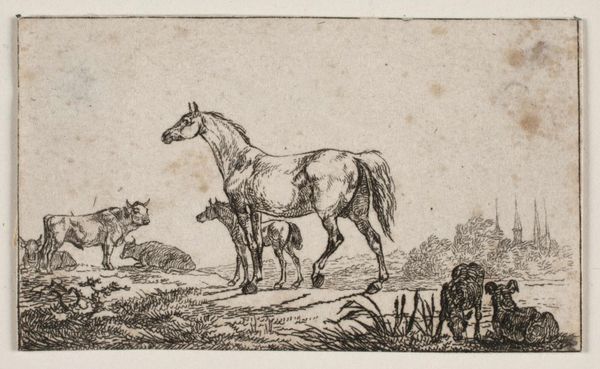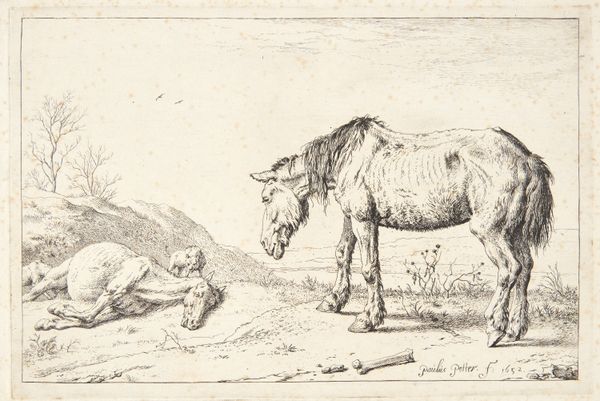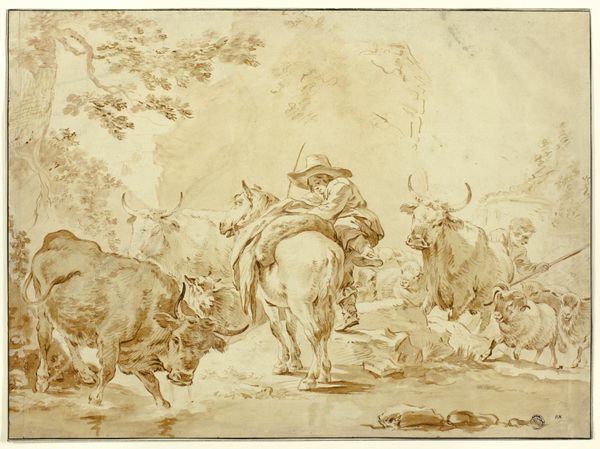
drawing, print, gouache, paper, ink, chalk, graphite
#
drawing
# print
#
gouache
#
landscape
#
figuration
#
paper
#
ink
#
pencil drawing
#
chalk
#
graphite
#
genre-painting
Dimensions: 139 × 187 mm
Copyright: Public Domain
Curator: This intriguing piece, whose creation we date indeterminately, is titled "Horses, Goat and a Man" and comes to us from the hand of Dirck Stoop. The artist worked with ink, gouache, graphite, chalk and pencil on paper to complete the drawing, now held at the Art Institute of Chicago. Editor: It’s…serene, in a weary sort of way. The tones are muted, almost melancholic, giving it the air of a dream, perhaps a memory. It feels profoundly human. Curator: It's fascinating to consider how these unassuming genre scenes gained popularity, catering to a rising middle class that found resonance in images of everyday life. They affirmed a specific cultural perspective on rural existence. Editor: The animals here, particularly the horses, bear an almost heraldic quality. The horse standing at rest, head atop the other's back…is that a symbol of domestic tranquility, or something more pointed about reliance? I see a figure, the man of the title, isolated at the side as though an observer. Curator: The artist employs a variety of printmaking techniques combined with drawing to emphasize depth, something very typical for the period. The lines defining the animals closest to us seem firmer, lending weight to the immediate foreground. I would even suggest these tonal shifts are symbolic of the separation of labor. Editor: Or perhaps he’s a vagrant, the opposite of an agricultural idyll? See how his stance is somewhat hunched, his posture closed and averted. I suspect a deeper commentary on social dynamics than a celebration of middle-class virtues, that it uses the figure of animals, rather than people, makes its allegorical interpretation complex. Curator: It's possible that Stoop is referencing more esoteric pictorial traditions to appeal to increasingly sophisticated collectors and patrons looking for symbolic depth. The combination of the familiar and unfamiliar was part of the marketplace for images in 17th century Netherlands. Editor: Well, it encourages a thoughtful conversation! This is a drawing with layers, a testament to the potent way an artist uses simple scenes to suggest larger meanings. Curator: Exactly, and it also shows the extent to which art provides subtle commentary on social life for viewers willing to reflect.
Comments
No comments
Be the first to comment and join the conversation on the ultimate creative platform.
